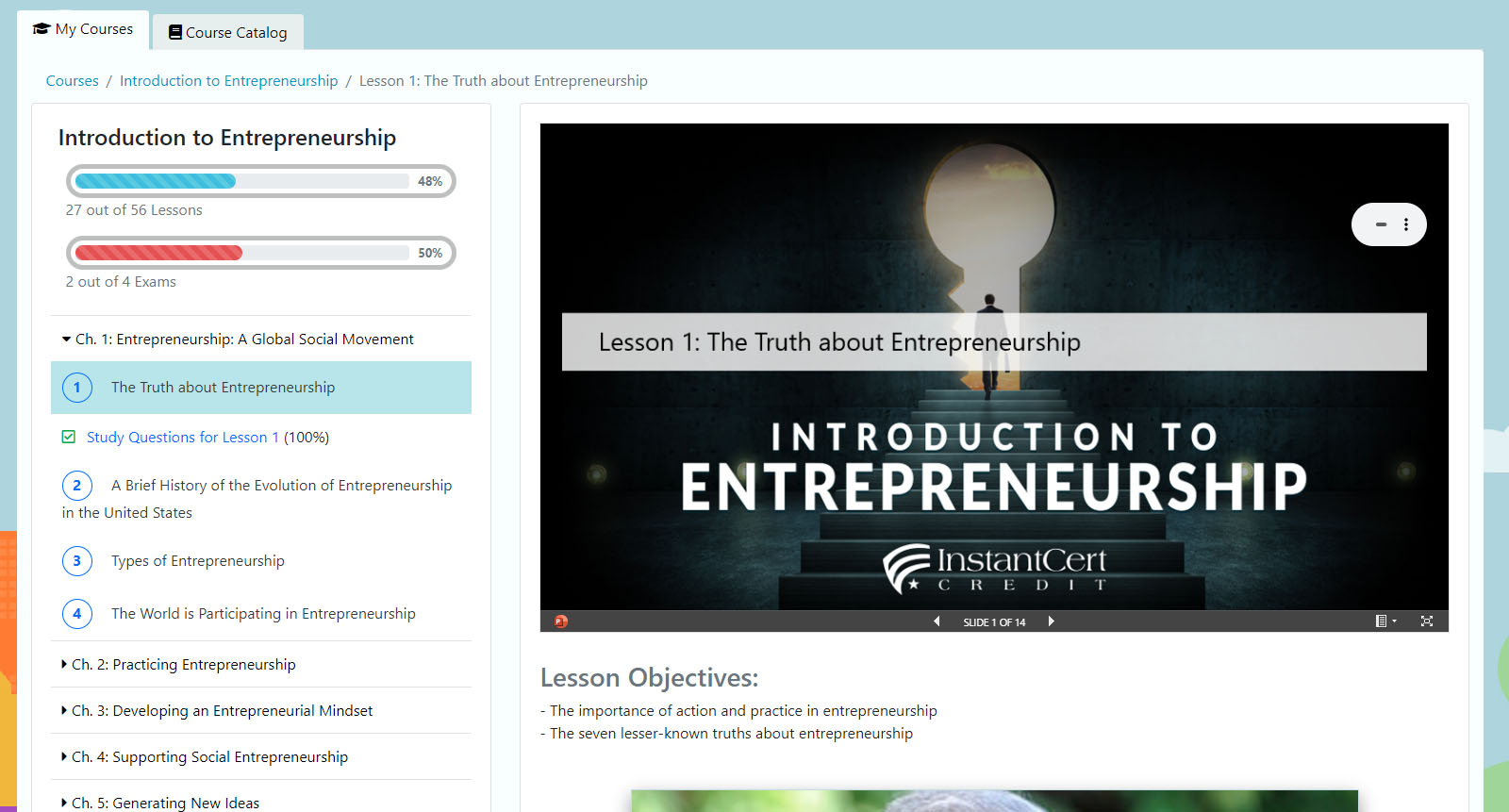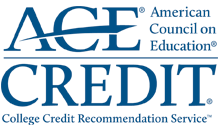InstantCREDIT Course
Introduction to Entrepreneurship

This course takes a more realistic, practice-based and inclusive approach to entrepreneurship than the typical course which tends to treat entrepreneurship in abstract terms. Students are introduced to the real-life actions and activities that entrepreneurs undertake, including how they navigate uncertain environments, how they create and test new ideas, how they learn from failure and how they act to support learning, instead of learning in order to act.
At a Glance
Course Value: 3 Credit Hours
Course Level: Lower-Level Undergraduate
Course Length: 56 lessons
🗎 Download Syllabus in Word Format
Course Level: Lower-Level Undergraduate
Course Length: 56 lessons
🗎 Download Syllabus in Word Format
Course Outline
Click on a chapter name below to expand and see the lessons contained in that chapter.
Ch. 1: Entrepreneurship: A Global Social Movement- 2: A Brief History of the Evolution of Entrepreneurship in the United States
- 3: Types of Entrepreneurship
- 4: The World is Participating in Entrepreneurship
- 6: The Five Skills Most Important to the Practice of Entrepreneurship
- 7: Entrepreneurship is More a Method than a Process
- 8: The Practice of Entrepreneurship: An Introduction
- 9: The Concept of Deliberate Practice
- 11: The Self-Leadership Habit and the Habit of Creativity
- 12: The Habit of Improvisation and the Mindset as the Pathway to Action
- 14: Capital Markets for Social Entrepreneurs, and Stakeholders
- 15: Differences between Social Entrepreneurship and Corporate Social Responsibility
- 17: Two Pathways to Opportunity Identification
- 18: From Idea Generation to Opportunity Recognition
- 20: The Design-Thinking Process: Inspiration, Ideation and Implementation
- 21: Pathways Toward Observation and Insights
- 22: Interviewing As a Useful Technique for Identifying Needs
- 24: Hypotheses and Customer Identification
- 25: Generating Data through Experimentation and the Power of Storyboarding
- 27: The Customer Value Proposition and the Business Model Canvas
- 30: The Business Plan Debate
- 29: Plans Take Many Forms
- 32: Generating Revenue from Free, and Revenue and Cost Drivers
- 33: Pricing Strategies
- 34: Calculating Price
- 36: The Failure Spectrum
- 37: Getting Gritty: Building a Tolerance for Failurelure
- 39: Crowdfunding Startups and Entrepreneurship
- 41: The Basics of Valuation
- 42: Angel Investors
- 43: Venture Capitalists
- 44: Due Diligence
- 46: The Value of Networks
- 47: Building Networks
- 48: Networking to Build the Founding Team
- 50: Legal Mistakes Made by Startups
- 51: Intellectual Property
- 52: Global IP Theft and IP Traps
- 53: Hiring Employees
- 55: Entrepreneurial Marketing
- 56: Marketing Yourself and the Art of Pitching
Course Requirements
All of our courses are scored on a 1,000 point scale. You must accumulate a total of 700 points in the course to pass the course. Below is the breakdown of how points are allocated:
| Study Questions | 300 points |
| Graded Exam #1 | 100 points |
| Midterm Exam | 200 points |
| Graded Exam #2 | 100 points |
| Final Exam | 300 points |
For additional details on the assignments, exams, and retake policies, check the syllabus for this course (link provided near the top of this page).
Exam Proctoring
The Final Exam for this course is administered in conjunction with a 3rd party online proctoring service, PSI Services' RPNow. RPNow proctoring allows you to take the exam on a desktop or laptop computer from anywhere you have internet access at any time, no scheduling required.
Proctoring costs $15 (paid directly to PSI Services at the time of the exam) and is ONLY required for the final exam.
Earning Credit for this Course

This course has been reviewed by ACE Credit and is recommended for 3 lower-level credit hours. Upon successful completion of this course, it will be added to your ACE transcript which is then sent to your school to be evaluated for transfer credit.
Getting Started
All InstantCert subscribers get access to our InstantCREDIT courses. There are no hidden fees or registration periods. Create an account and start your course today.


